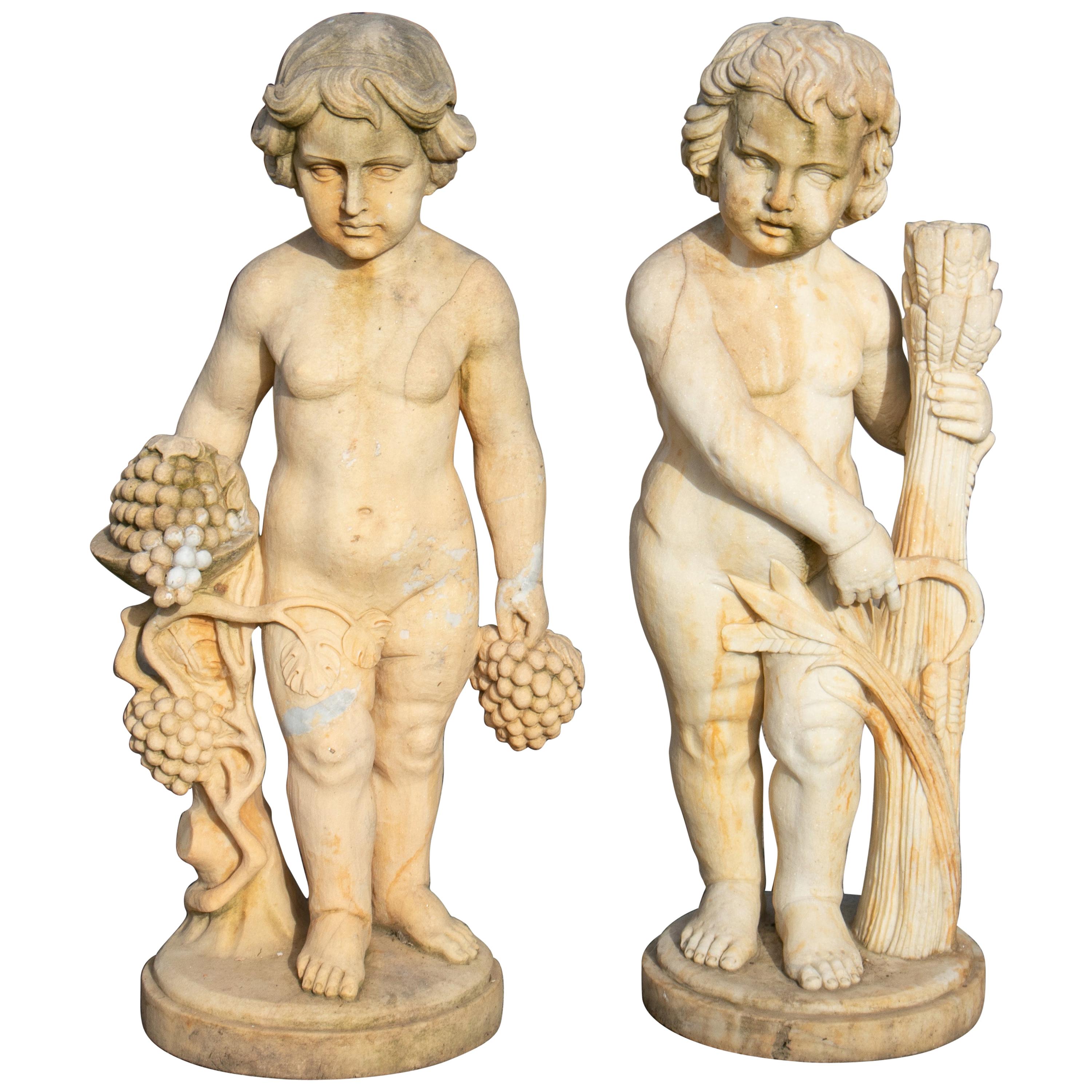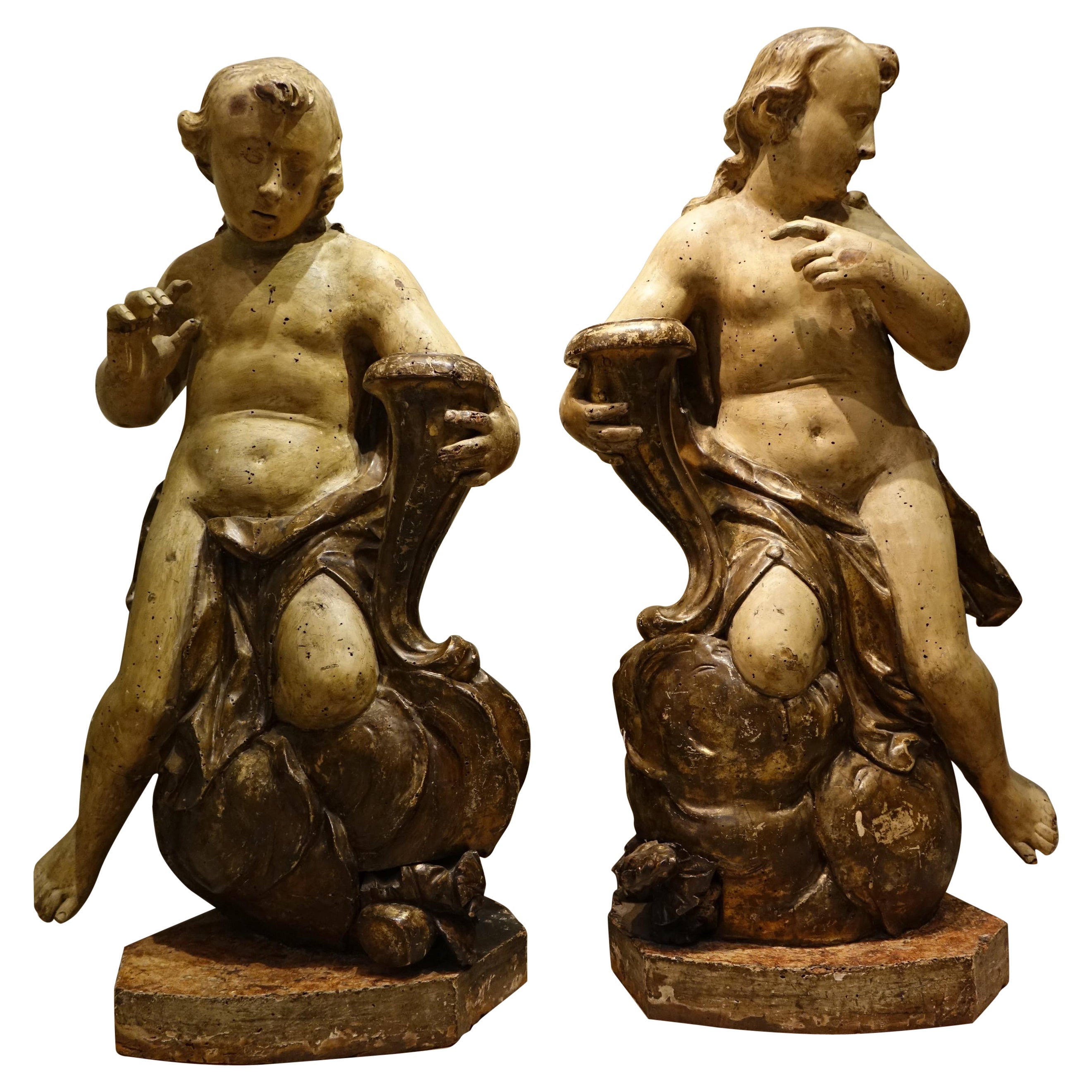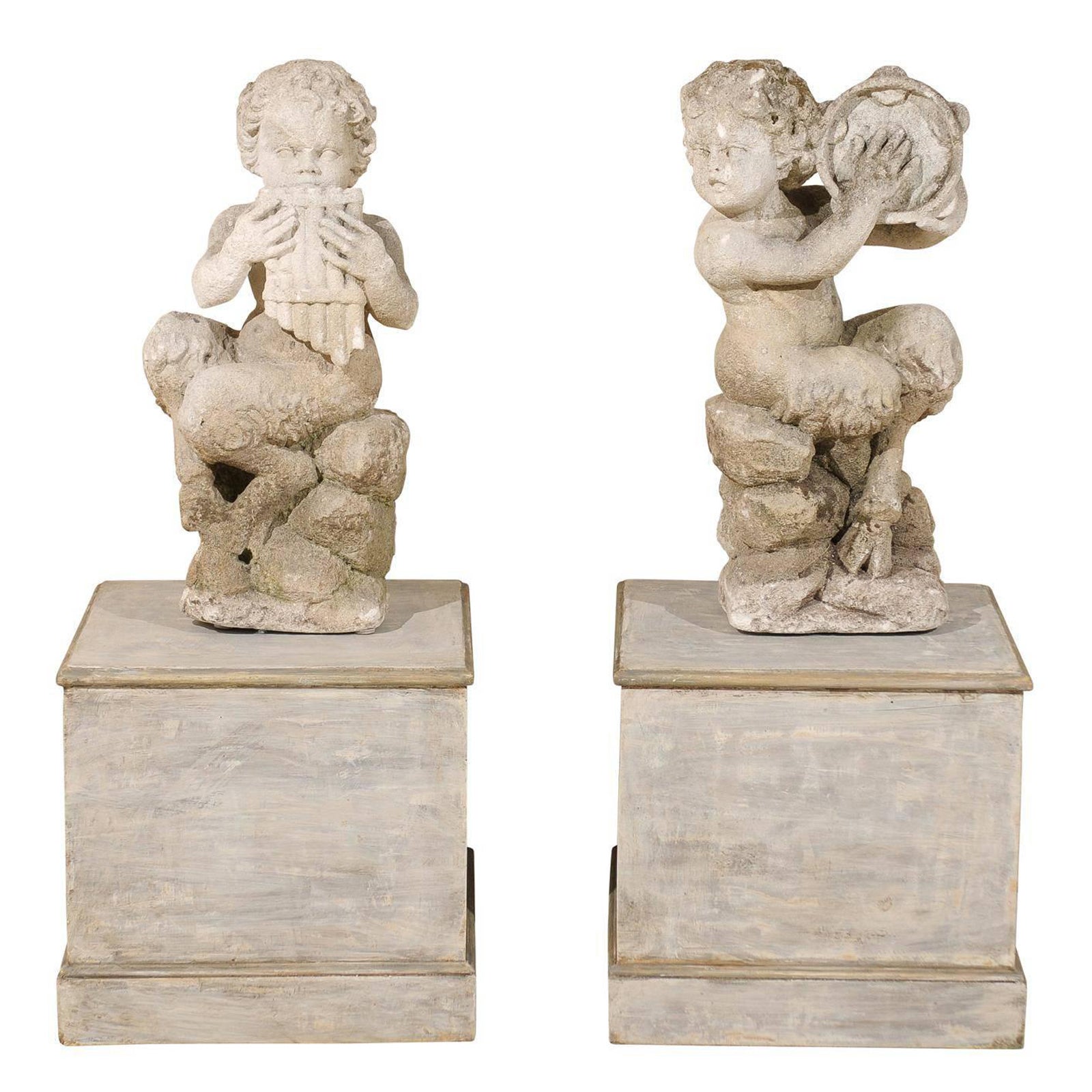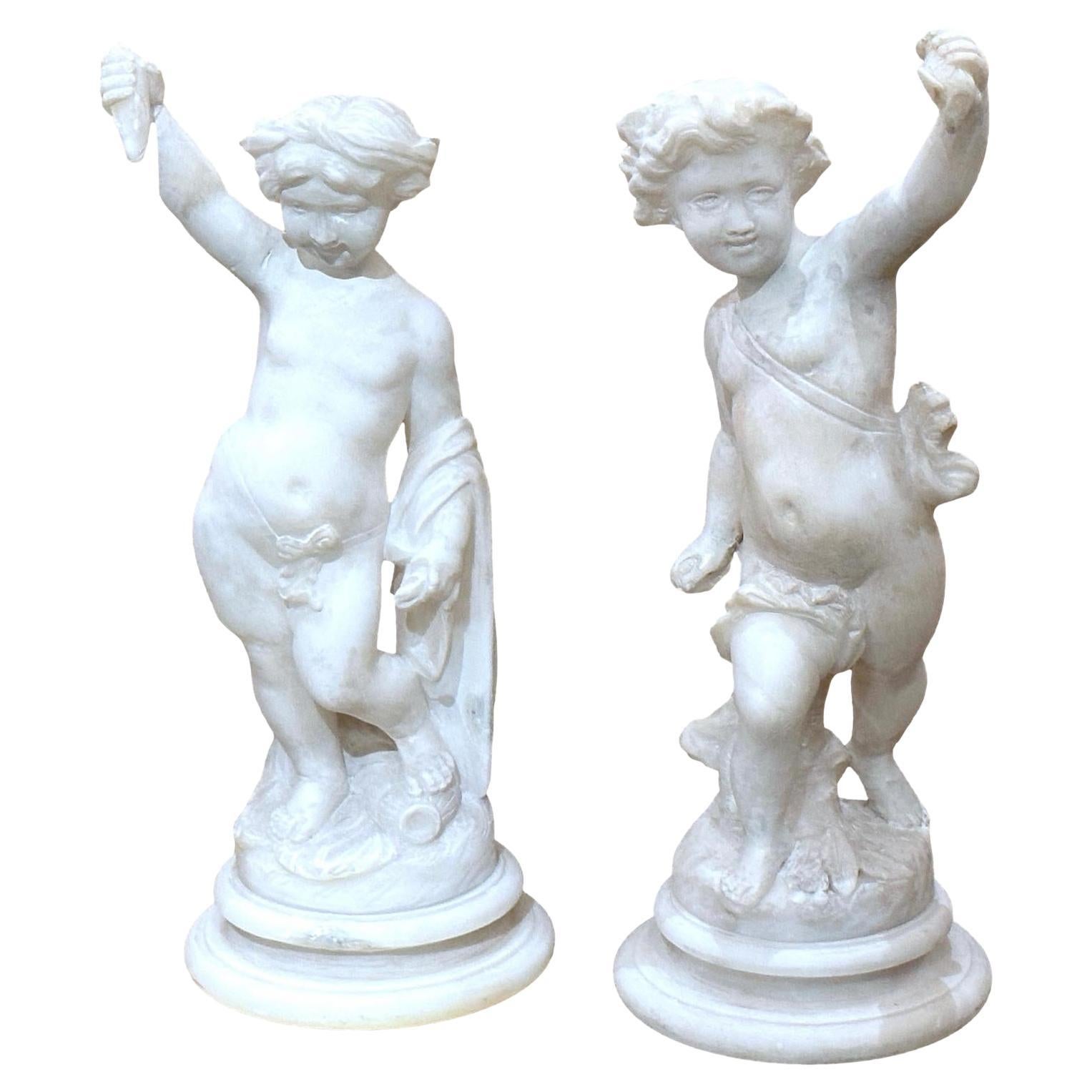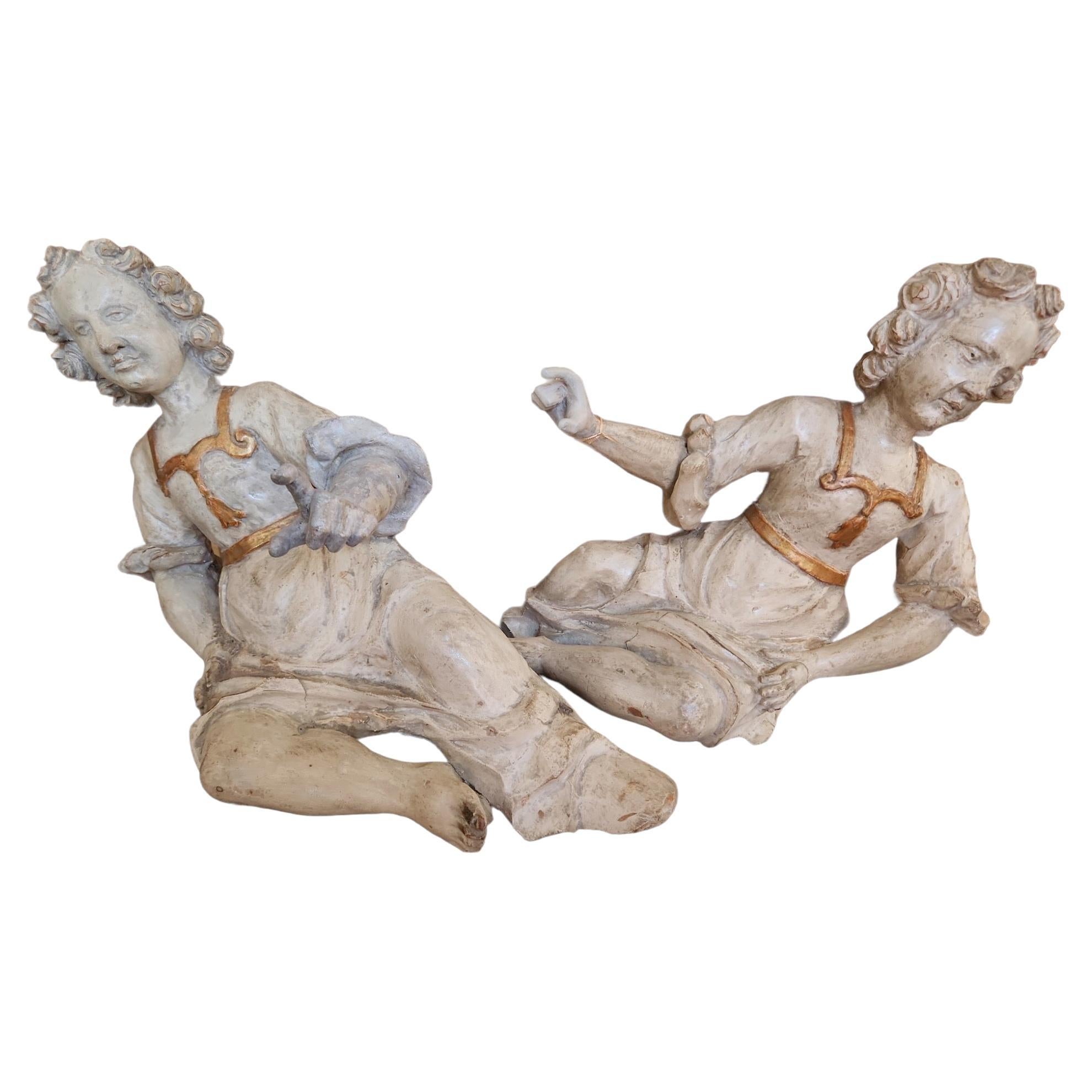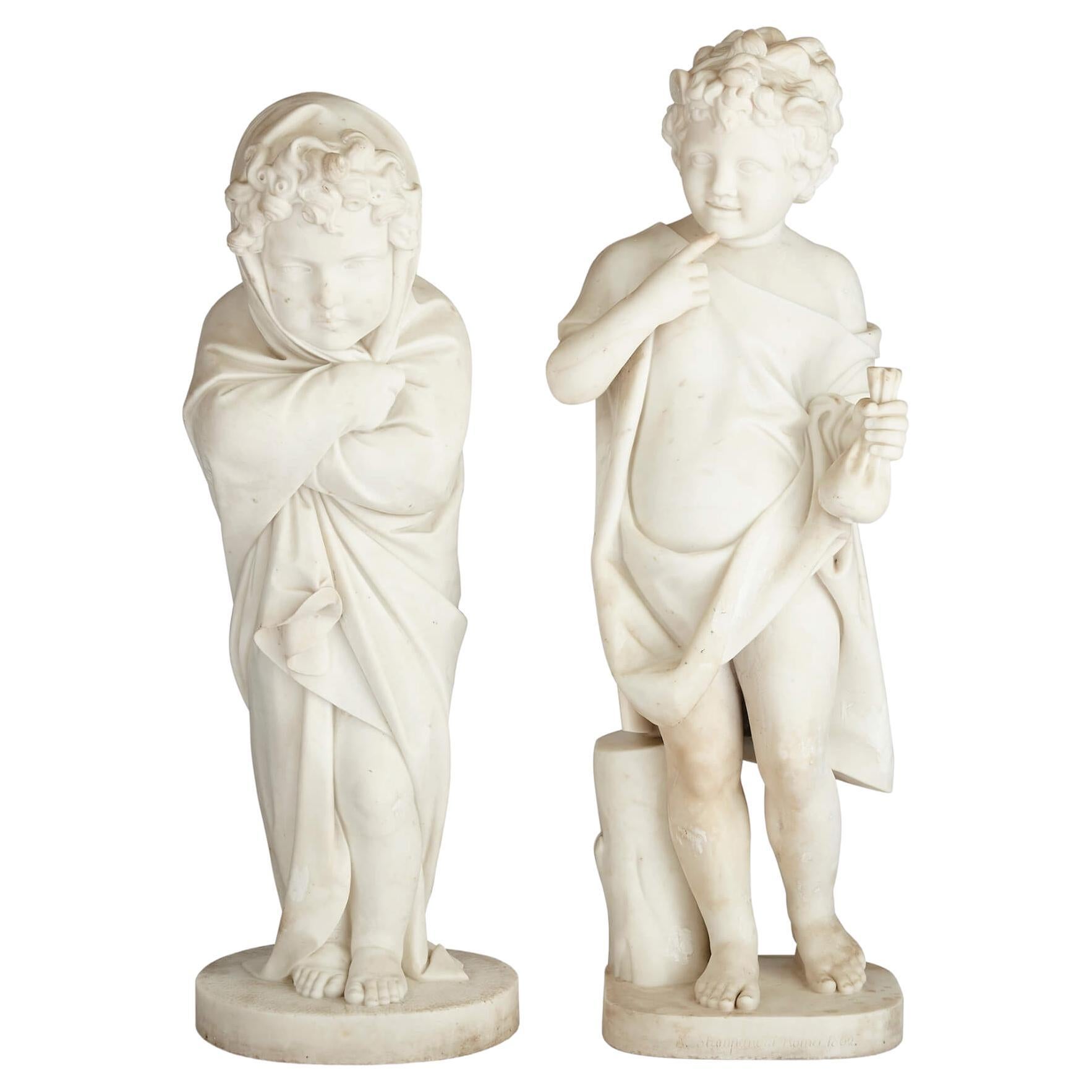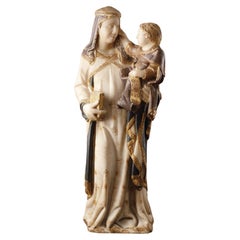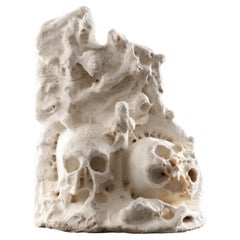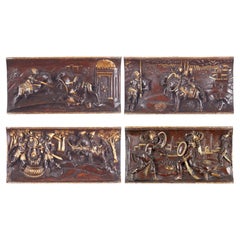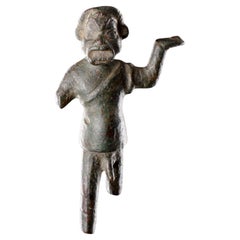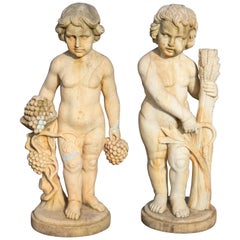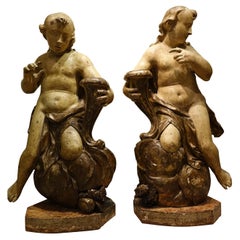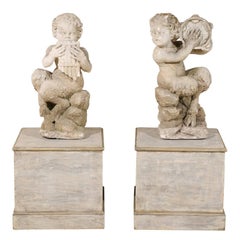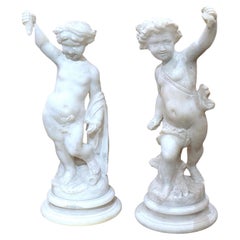Items Similar to A Superb Pair of Neapolitan Carved Figures of Dwarves
Want more images or videos?
Request additional images or videos from the seller
1 of 21
A Superb Pair of Neapolitan Carved Figures of Dwarves
$80,000per set
£60,946.71per set
€69,554.62per set
CA$112,418.93per set
A$122,516.85per set
CHF 64,877.96per set
MX$1,471,556.45per set
NOK 821,369.28per set
SEK 755,168.26per set
DKK 519,495.87per set
About the Item
A Superb Pair of Neapolitan Carved Figures of Dwarves
Attributed to Francesco Celebrano (1729 - 1814)
Marble
Naples, Italy
18th Century
SIZE: Male: 36cm high - 14¼ ins high
Female: 36cm high - 14¼ ins high
PROVENANCE:
Ex Private collection
Francesco Celebrano was an Italian artist, sculptor and painter. He was well known for producing Neapolitan ‘presepio’ creche figures. A number of his ‘presepio’ figures are housed in museums, including Naples, Bavarian National Museum in Munich and the Metropolitan Museum, New York.
Celebrano trained as a painter and from the 1760s worked as a sculptor, painter and designer in Naples. He painted a number of altarpieces, was commissioned for the sculpture of the Chapel of San Severo in Sta Maria della Pietà and designed the maritime chariot for del d'Ofri, which brought him to the attention of Ferdinand IV (1751 - 1825). He was appointed director of the Royal Porcelain Factory of Naples at Capodimonte in 1770 and remained as its head until 1781. During this time, many models of figures were created at the factory, which may have reflected Celebrano’s interest in and modelling of figures for the Neapolitan ‘presepio’ figures.
- Attributed to:Francesco Celebrano (Artist)
- Dimensions:Height: 14 in (35.56 cm)Width: 8 in (20.32 cm)Depth: 6 in (15.24 cm)
- Sold As:Set of 2
- Materials and Techniques:
- Place of Origin:
- Period:
- Date of Manufacture:18th Century
- Condition:Wear consistent with age and use. Very good overall condition. With an excellent colour and patina through handling.
- Seller Location:London, GB
- Reference Number:1stDibs: LU9363236816042
About the Seller
5.0
Recognized Seller
These prestigious sellers are industry leaders and represent the highest echelon for item quality and design.
Established in 1989
1stDibs seller since 2023
Typical response time: <1 hour
- ShippingRetrieving quote...Shipping from: London, United Kingdom
- Return Policy
More From This Seller
View AllA Polychrome and Parcel-Gilt Marble Group of the Virgin and Child
Located in London, GB
A Polychrome and Parcel-Gilt Marble Group of the Virgin
and Child
Attributed to Giovanni Di Balduccio (1317 - 1349)
Marble
Italy
Circa 1330 - 1340
SIZE: 65cm high, 28cm wide - 25½ ins high, 11 ins wide
PROVENANCE:
Possibly Trivolzio Collection, Milan
With Piero Tozzi Inc., New York
Acquired by the William Randolph Hearst Foundation for The Los Angeles County Museum (A.5832.47-42), 1947
An auction of property de-accessioned by the Los Angeles County Museum of Art to benefit new acquisitions...
Category
Antique 15th Century and Earlier Italian Figurative Sculptures
Materials
Marble
An Unusual and Rare English ‘Memento Mori’ Carved Shrine with Two Human Skulls
Located in London, GB
An Unusual and Rare English ‘Memento Mori’ Carved Shrine with Two Human Skulls to the underside, a carved ‘Dragonfly’
Marble
16th / 17th Century
England
Size: 36cm high, 28cm w...
Category
Antique 16th Century English Figurative Sculptures
Materials
Marble
A Set of Four Tuscan Carved Wood and Parcel Gilt Equestrian Reliefs
Located in London, GB
A Set of Four Tuscan Carved Wood and Parcel Gilt Equestrian Reliefs
Walnut, gilt, velvet
Italy
Circa 1580
SIZE: two reliefs: 25cm high, 48cm wide - 9¾ ins high, 19 ins wide
two...
Category
Antique 16th Century Italian Wall-mounted Sculptures
Materials
Velvet, Walnut
A Rare and Finely Detailed Greek Bronze Statuette of an Actor with Large Phallus
Located in London, GB
A Rare and Finely Detailed Greek Bronze Statuette of an Actor with Large Phallus
Bronze
Greek
First half of 4th Century BC
Size: 10.5cm high - 4¼ ins high
Provenance:
Ex Privat...
Category
Antique 15th Century and Earlier Greek Antiquities
Materials
Bronze
A Rare and Finely Carved Weser Renaissance Stone Head
Located in London, GB
A Rare and Finely Carved Weser Renaissance Stone Head
Stone
Germany
16th Century
Size: 23cm high, 21cm wide, 21cm deep - 9 ins high, 8¼ ins wide, 8¼ ins deep / 33cm high ...
Category
Antique 16th Century German Architectural Elements
Materials
Stone
A Superbly Carved Lime Spatula Representing Two Figures
Located in London, GB
A Superbly Carved Lime Spatula Representing Two Figures
Wood (ebony)
Northern (?) Massim, New Guinea
19th Century
Size: 31cm long - 12¼ ins long
Provenance:
Ex Anthony Meyer G...
Category
Antique 19th Century Papua New Guinean Tribal Art
Materials
Ebony
You May Also Like
Pair of Hand Carved Boys Marble Sculptures that Have Been Aged to Look Antique
Located in Marbella, ES
Pair of hand carved boys marble sculptures, one holding fruits and the other wheat, that have been aged to look antique.
Category
Late 20th Century European Figurative Sculptures
Materials
Marble
Pair of large baroque statues , Italy Genova 17th century
Located in PARIS, FR
Pair of large statues carved in the round, probably representing cerulean angels (although there is no evidence of wings on the back), or allegories of fortune (in which case we can ...
Category
Antique 17th Century Italian Baroque Figurative Sculptures
Materials
Wood
Pair of Italian Early 20th C. Carved Panisci Figures on Custom Wooden Bases
Located in Atlanta, GA
A pair of Italian early 20th century carved limestone "Panisci" figures (followers of the god pan, half children, half goats), playing musical instruments ...
Category
Early 20th Century Italian Figurative Sculptures
Materials
Limestone
Pair of Carved Alabaster Putti
Located in New York, NY
Pair of Italian circa 19th century alabaster putti with original patina.
Measurements:
Height 12.5"
Diameter 5".
Category
Antique 19th Century Italian Figurative Sculptures
Materials
Alabaster
$4,200 / set
Pair of 18th Century Italian Carved Figures
Located in Los Angeles, CA
Not sure if paint is original. Finely carved and unusual. From a beautiful home in Santa Barbara.
Category
Antique 18th Century Italian Neoclassical Figurative Sculptures
Materials
Wood, Paint
$7,500 / set
Pair of Large Italian Carrara Marble Putti Sculptures by Stampanoni
Located in London, GB
Pair of large Italian carrara marble putti sculptures by Stampanoni
Italian, late 19th century
Boy: height 89cm, width 31cm, depth 25cm
Girl:...
Category
Antique Late 19th Century Italian Rococo Figurative Sculptures
Materials
Carrara Marble
More Ways To Browse
Antique Neapolitan
Porcelain Naples
Antique Creche
Neapolitan Figures
Neapolitan Creche
Moreau Spelter
Rape Of The Sabine
Sculptures Of Lovers
Terra Cotta Paintings
Tomb Figure
Woman Dancer Sculpture
17th Century Terracotta
18th Century Italian Cherub
A Carrier Bronze
Antique Hand Carved Ivory
Antique Spelter Statues
Blown Glass Head
Car Mascot Hood Ornament
